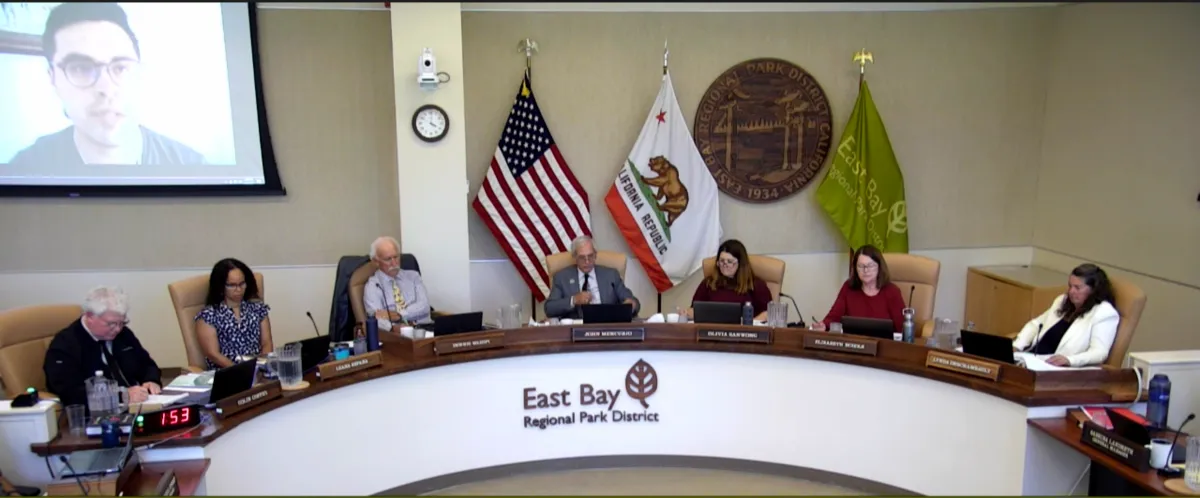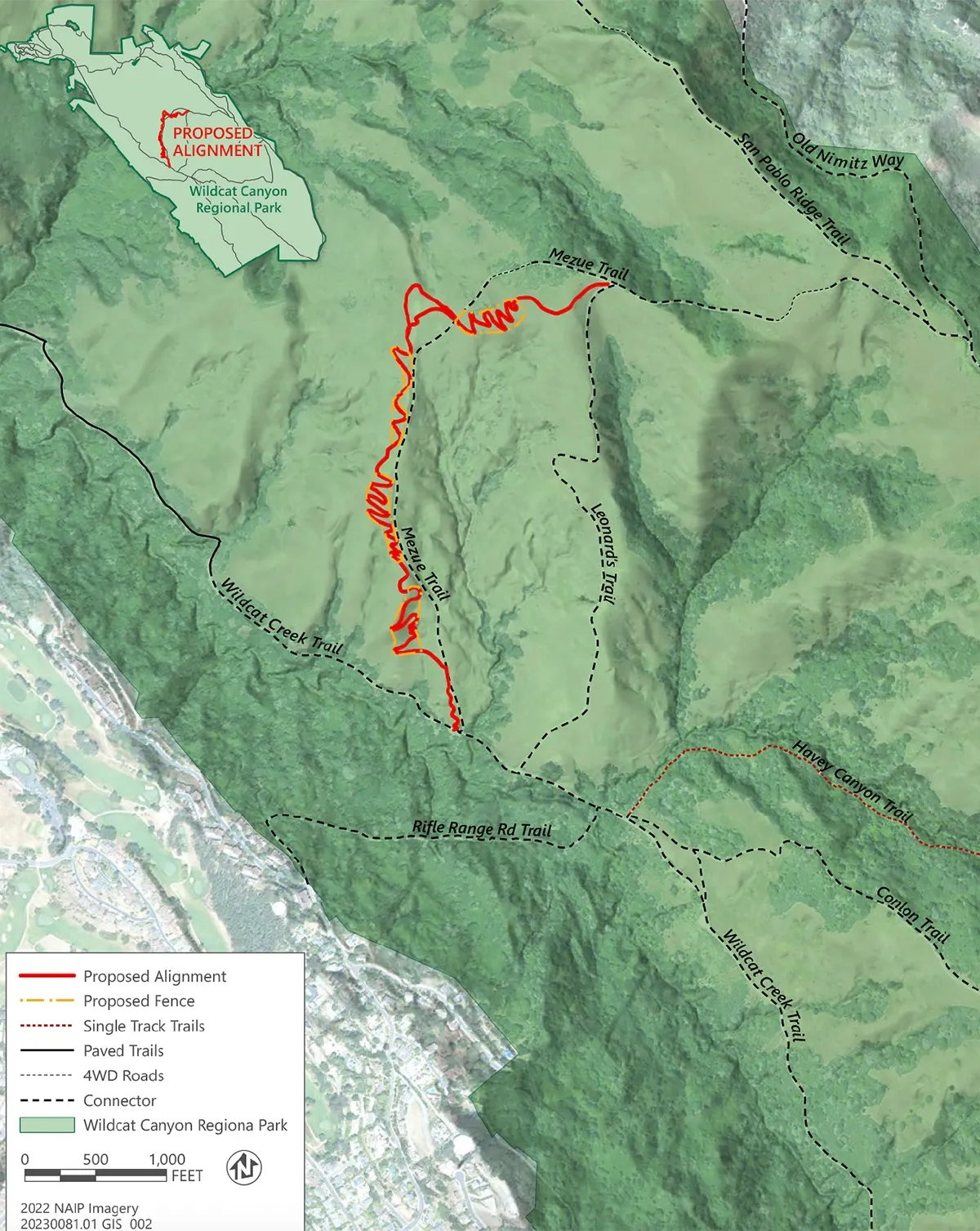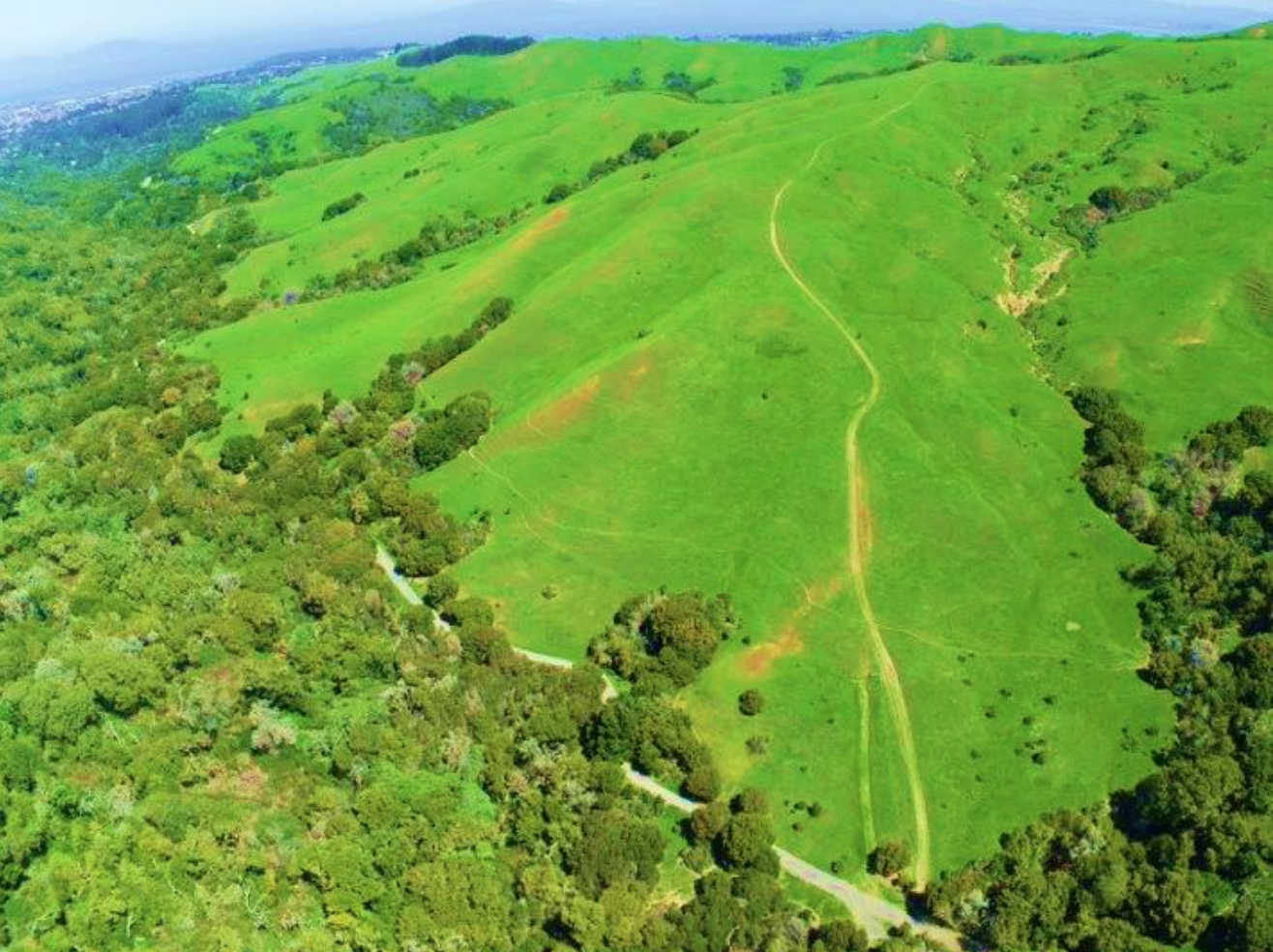

The East Bay Regional Park District Board of Directors on Tuesday, August 5, 2025, approved the release of a Notice of Preparation for an Environmental Impact Report (EIR) on a proposed new bike trail in Wildcat Canyon Regional Park.
The vote advances a project that has sparked intense public interest — and debate among local residents, environmental groups, and trail users. Supporters say it’s a much-needed step to improve access and reduce trail conflicts. Opponents argue it threatens the park’s natural character and violates long-standing land use protections.

The proposal would create roughly 1.44 miles of new, one-way downhill trail for mountain bikers of varying skill levels, including youth riders. The trail would be bike-only and separate from existing multi-use trails, which staff say would help reduce crowding and restore informal, unauthorized routes that have emerged in the area.
According to the staff report, the goal is to strike a balance: improving safety and access for cyclists while protecting sensitive habitats and cultural resources.
Park District General Manager Sabrina Landreth said the project does not create a new recreational use in Wildcat Canyon but responds to existing demand.
“This is part of our process,” Landreth said. “Staff anticipates a really robust, continued community outreach process as we go through this environmental review, and it will be fully transparent — including the approval at the end of the day by this board. So this is not final approval.”
Landreth emphasized that bicycling is already an established use in the park, identified in the current land use plan, and the proposed trail would largely parallel an existing route.
“The trail would provide a safer and more satisfying trail experience for all users,” Landreth said, adding that staff biologists and consultants have reviewed the site and determined the location would minimize impacts on species while addressing the reality that “park users are already there and already accessing this location by bicycle.”
Landreth also responded to concerns raised in public comment that the process was driven by potential donors or outside pressure.
“We do not allow potential funding sources to drive our staff work,” she said. “Just because there was a pledge by a community member — that is not how we approach this.”
Deputy General Manager Max Korten reiterated that the decision to conduct a full EIR was voluntary.
“We’re not recommending this because the project has potentially significant impacts,” Korten said. “We created this step to add transparency, to provide for public engagement, and for your board to ask questions and provide direction to staff.”
Korten outlined the next steps: if the board directs staff to proceed, they will begin drafting the notice of preparation, conduct the public scoping process, and prepare a draft EIR. That draft would be released for a 45-day public comment period, including a public meeting. After responding to all comments, staff would bring the final EIR and recommendations back to the board for potential approval.
Board member Elizabeth Echols voiced support for the project and praised young cyclists’ trail etiquette.
“These young people, I am always so impressed,” she said. “They wave, they say hello, they ring the bell. That comes from their coaches and the ethic they’re learning.”
Echols said the trail would help reduce conflict by separating user groups.
“This gives bikers their own trail and designates the Leonard Trail for horses and hikers only," Echols said.
Environmental advocates and some longtime park users voiced strong opposition, especially over the trail’s proposed location in a designated “Natural Area” of the park.
In an August 2 email, the California Native Plant Society’s East Bay Chapter urged members to speak out, arguing the project violates the park’s Land Use Plan, which calls for Natural Areas to remain “free from intensive recreation” and “devoid of any development except trails for hiking, equestrian and service use.”
The group also criticized the outreach process, saying the general public “has not been adequately informed.”
During the hours-long public comment section, Norma Wallace warned of potential harm to wildlife.
“When I go out hiking, lizards crave those open spaces where they can sun themselves. I can see this mountain bike course becoming a graveyard for lizards, squished.”
But supporters of the project pushed back just as strongly. Michael Mejia, a local resident who’s been riding in Wildcat Canyon since the 1980s, dismissed what he called “catastrophic stories.”
“I’ve been riding in that park since 1989. It keeps me sane. I enjoy the open spaces, the calm, the climbing, the sweating, the whole thing,” Mejia said.
Mejia argued the location is appropriate: “That ridge near Mezue? It’s bald. It’s been grazed for hundreds of years. I don’t want to hear that you’re worried about squirrels; it’s a neutral space. Hikers won’t even be affected.”
Another strong voice in support came from Royer Ramirez-Ruiz, a Hasford Heights resident and East Richmond Heights Municipal Advisory Council member. Ramirez-Ruiz, who lives two blocks from the park, said the trail represents more than just recreation.
“I want to be clear that I’m not just speaking for myself. I’m speaking for my generation, which has repeatedly seen decisions made by older generations that limit our access, our opportunities, and our voice in shaping the communities we live in,” Ramirez-Ruiz said. “This trail is a small example of that bigger pattern and quite frankly, we’re tired of it.”
Ramirez-Ruiz described mountain biking as central to his own upbringing and called the trail an issue of equity.
“It promotes health, mental wellness, and gets people off screens and into nature,” Ramirez-Ruiz said.
The EIR process will examine potential impacts on air quality, biological and cultural resources, greenhouse gas emissions, tribal cultural resources, and transportation. A draft is expected by spring 2026, with construction starting no earlier than 2027 if approved. The estimated cost of the trail is between $500,000 and $700,000.
 Grandview IndependentSoren Hemmila
Grandview IndependentSoren Hemmila
SUPPORT LOCAL JOURNALISM - SUBSCRIBE TODAY!
Grandview Independent needs your financial support to continue delivering the news that matters to our community. Quality journalism costs money, and we can't do it without readers like you.
SUBSCRIBE NOW and get:
• Unlimited access to all articles
• Newsletters with exclusive content
• The satisfaction of backing independent local news that serves your community
CLICK HERE TO SUBSCRIBE - Starting at just $10/month
FOLLOW US FOR BREAKING NEWS:
• Twitter: @GrandviewIndy
• Instagram: @GrandviewIndependent
• Facebook: @Grandview Independent
Copyright © 2025 Grandview Independent, all rights reserved.
